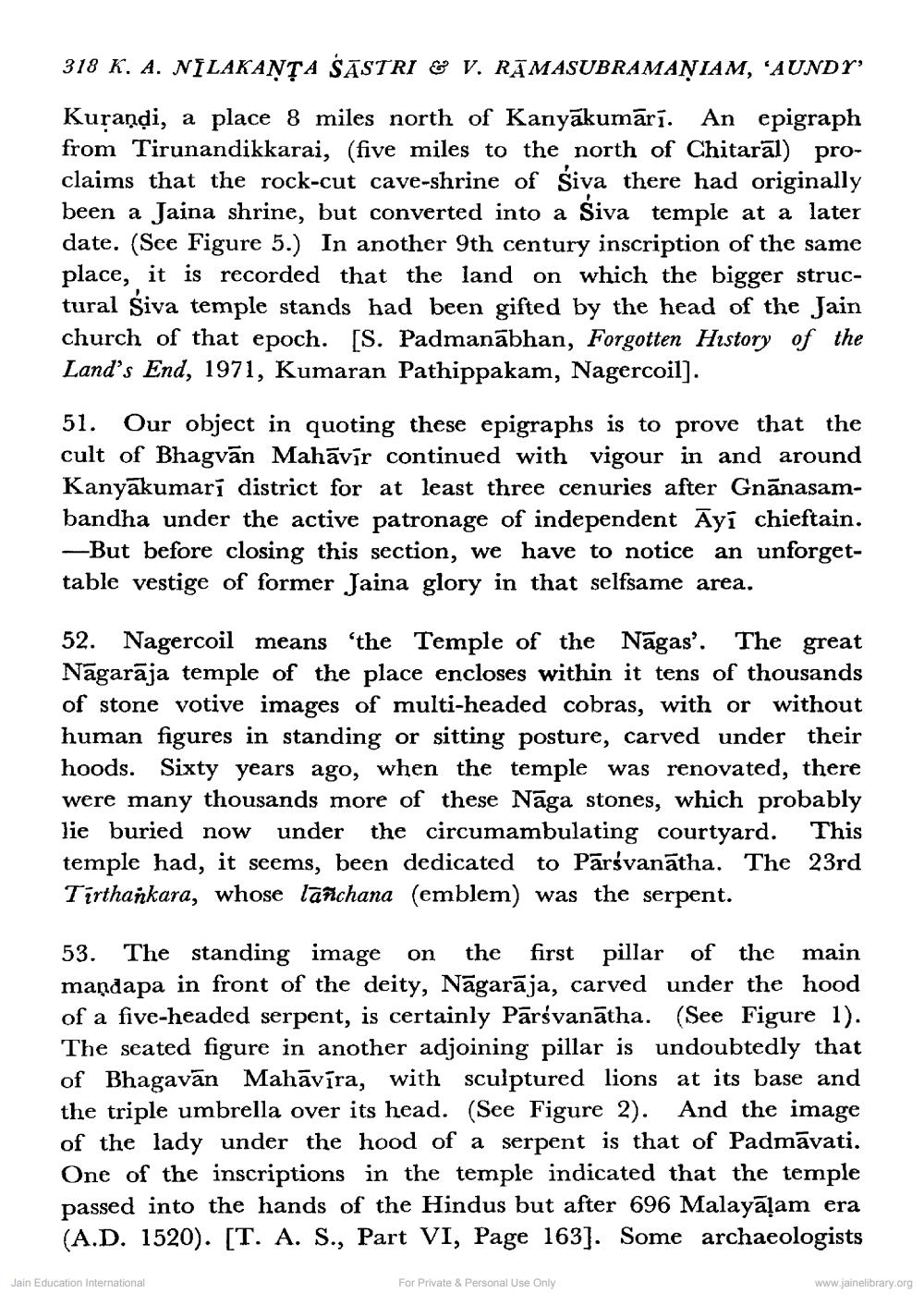________________
318 K. A. NĪLAKAŅṬA ŠĀSTRI & V. RĀMASUBRAMAŅIAM, ‘AUNDY'
Kurandi, a place 8 miles north of Kanyākumārī. An epigraph from Tirunandikkarai, (five miles to the north of Chitarāl) proclaims that the rock-cut cave-shrine of Siva there had originally been a Jaina shrine, but converted into a Śiva temple at a later date. (See Figure 5.) In another 9th century inscription of the same place, it is recorded that the land on which the bigger structural Śiva temple stands had been gifted by the head of the Jain church of that epoch. [S. Padmanābhan, Forgotten History of the Land's End, 1971, Kumaran Pathippakam, Nagercoil].
51. Our object in quoting these epigraphs is to prove that the cult of Bhagvan Mahavir continued with vigour in and around Kanyakumari district for at least three cenuries after Gnanasambandha under the active patronage of independent Ayi chieftain. -But before closing this section, we have to notice an unforgettable vestige of former Jaina glory in that selfsame area.
52. Nagercoil means 'the Temple of the Nagas'. The great Nāgarāja temple of the place encloses within it tens of thousands of stone votive images of multi-headed cobras, with or without human figures in standing or sitting posture, carved under their hoods. Sixty years ago, when the temple was renovated, there were many thousands more of these Naga stones, which probably lie buried now under the circumambulating courtyard. This temple had, it seems, been dedicated to Parsvanatha. The 23rd Tirthankara, whose lanchana (emblem) was the serpent.
53. The standing image on the first pillar of the main mandapa in front of the deity, Nagaraja, carved under the hood of a five-headed serpent, is certainly Pārsvanātha. (See Figure 1). The seated figure in another adjoining pillar is undoubtedly that of Bhagavan Mahāvīra, with sculptured lions at its base and the triple umbrella over its head. (See Figure 2). And the image of the lady under the hood of a serpent is that of Padmavati. One of the inscriptions in the temple indicated that the temple passed into the hands of the Hindus but after 696 Malayāļam era (A.D. 1520). [T. A. S., Part VI, Page 163]. Some archaeologists
Jain Education International
For Private Personal Use Only
www.jainelibrary.org




